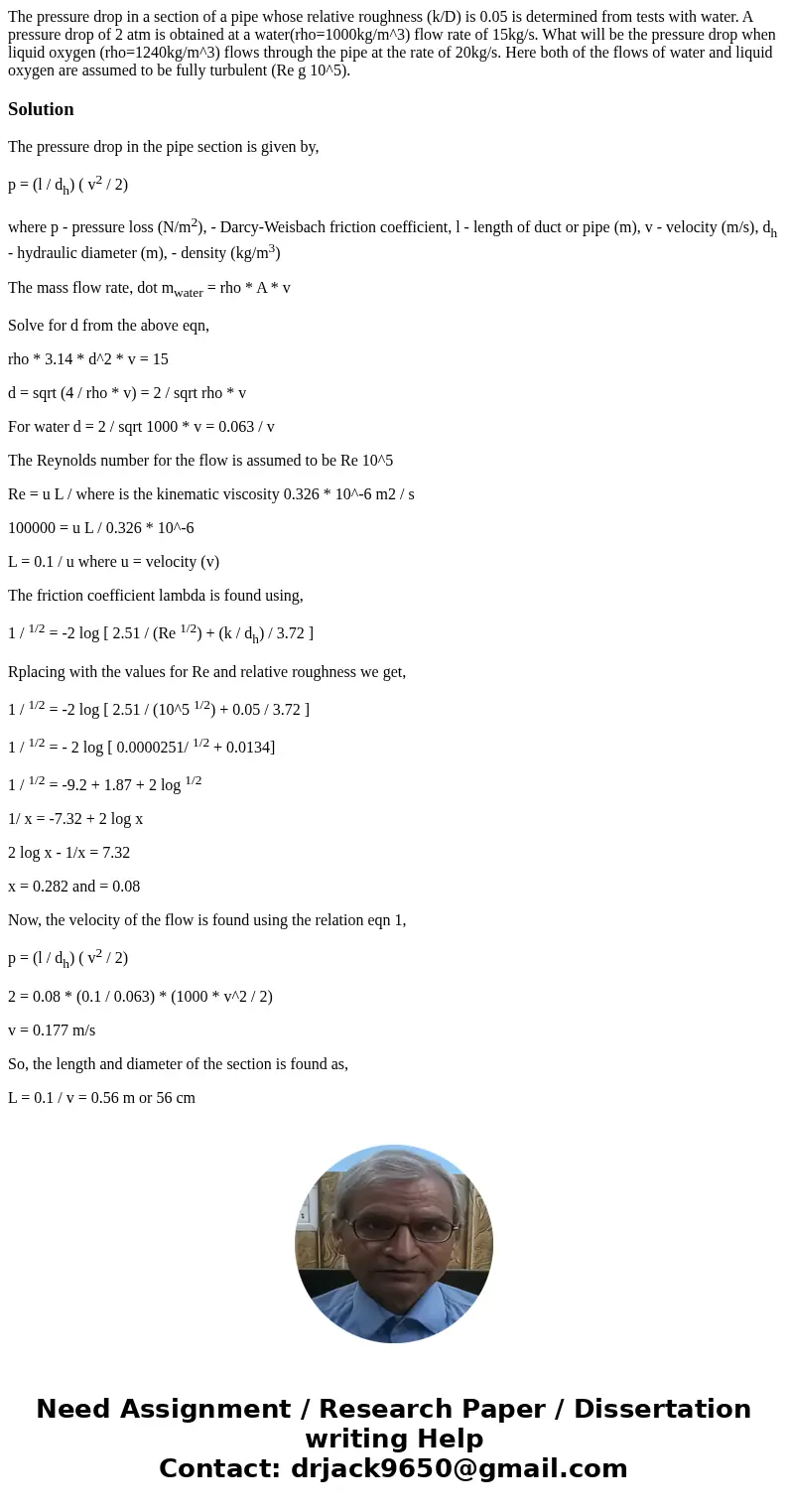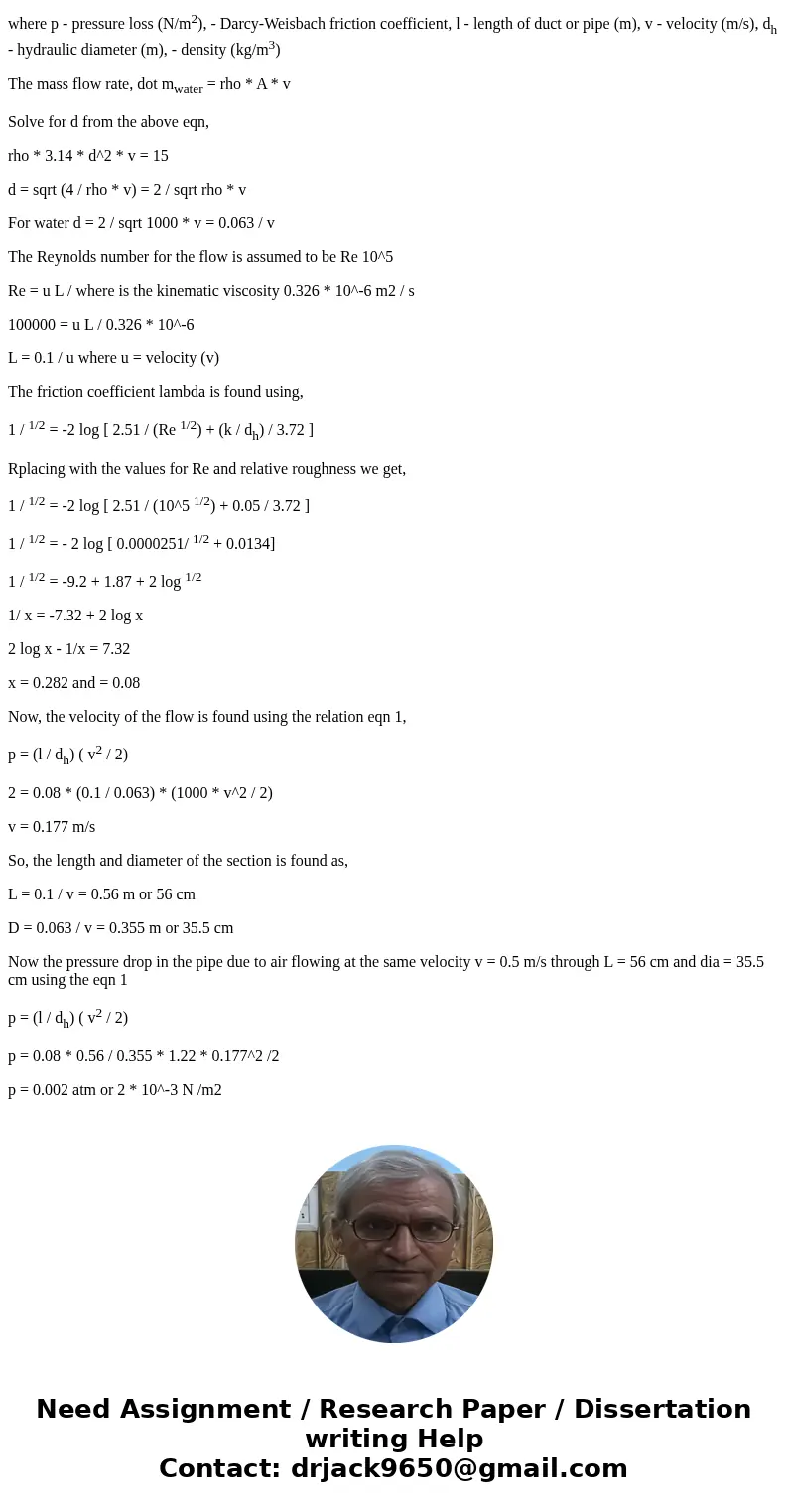The pressure drop in a section of a pipe whose relative roug
Solution
The pressure drop in the pipe section is given by,
p = (l / dh) ( v2 / 2)
where p - pressure loss (N/m2), - Darcy-Weisbach friction coefficient, l - length of duct or pipe (m), v - velocity (m/s), dh - hydraulic diameter (m), - density (kg/m3)
The mass flow rate, dot mwater = rho * A * v
Solve for d from the above eqn,
rho * 3.14 * d^2 * v = 15
d = sqrt (4 / rho * v) = 2 / sqrt rho * v
For water d = 2 / sqrt 1000 * v = 0.063 / v
The Reynolds number for the flow is assumed to be Re 10^5
Re = u L / where is the kinematic viscosity 0.326 * 10^-6 m2 / s
100000 = u L / 0.326 * 10^-6
L = 0.1 / u where u = velocity (v)
The friction coefficient lambda is found using,
1 / 1/2 = -2 log [ 2.51 / (Re 1/2) + (k / dh) / 3.72 ]
Rplacing with the values for Re and relative roughness we get,
1 / 1/2 = -2 log [ 2.51 / (10^5 1/2) + 0.05 / 3.72 ]
1 / 1/2 = - 2 log [ 0.0000251/ 1/2 + 0.0134]
1 / 1/2 = -9.2 + 1.87 + 2 log 1/2
1/ x = -7.32 + 2 log x
2 log x - 1/x = 7.32
x = 0.282 and = 0.08
Now, the velocity of the flow is found using the relation eqn 1,
p = (l / dh) ( v2 / 2)
2 = 0.08 * (0.1 / 0.063) * (1000 * v^2 / 2)
v = 0.177 m/s
So, the length and diameter of the section is found as,
L = 0.1 / v = 0.56 m or 56 cm
D = 0.063 / v = 0.355 m or 35.5 cm
Now the pressure drop in the pipe due to air flowing at the same velocity v = 0.5 m/s through L = 56 cm and dia = 35.5 cm using the eqn 1
p = (l / dh) ( v2 / 2)
p = 0.08 * 0.56 / 0.355 * 1.22 * 0.177^2 /2
p = 0.002 atm or 2 * 10^-3 N /m2


 Homework Sourse
Homework Sourse